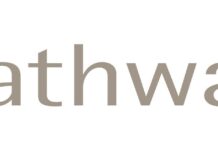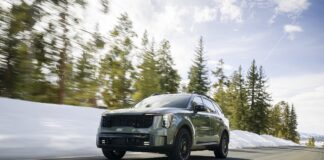SAN ANTONIO, April 19, 2017 /PRNewswire-HISPANIC PR WIRE/ — SeaWorld is excited to announce the birth of the newest member of the SeaWorld family of killer whales. Takara, the 25-year-old matriarch of the orca pod, gave birth to the calf at 2:33 p.m. Central Time, April 19, 2017, at SeaWorld San Antonio. A team of veterinarians and animal care specialists witnessed the historic birth and are continuing to monitor Takara and her new baby 24-hours-a-day to help ensure a successful start.
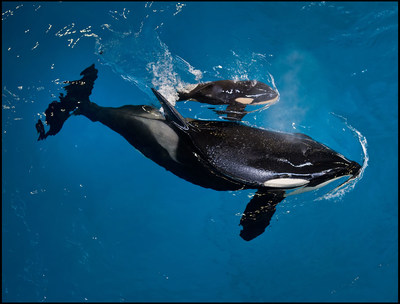
Guests at SeaWorld San Antonio will have the opportunity to visit and observe Takara and her calf in the near future during select times. Although this will be the last opportunity for SeaWorld guests to see a baby killer whale up close as it grows and matures, SeaWorld will continue to care for the orcas at its parks for decades to come.
“This is an exciting and emotional day for us at SeaWorld and we are all so proud to share this new killer whale calf with the world, after a year and a half of planning, and observing and providing all the special care,” said Chris Bellows, Vice President of Zoological Operations. “Takara is a great mom and immediately began bonding with and caring for her new baby. Everyday she inspires SeaWorld’s guests to learn more about and do more to protect animals in the wild. She is a true ambassador.”
Julie Sigman, an Assistant Curator at SeaWorld San Antonio who has been with Takara through three of her last pregnancies and births, expressed her excitement at watching the calf surface to take its first breath. “Nothing can prepare you for that moment when mom helps the calf get to the surface for its first breath. The moment the calf is born, Takara is 100% focused on the care and well-being of that baby. She knows exactly what to do. It is amazing,” said Sigman.
“Takara will continuously swim with her calf as it begins to nurse and learn,” added Sigman. “We take our lead from mom, Takara will let us know when she is ready for us to meet the calf and at that time we should be able to determine the gender.”
Takara, born at SeaWorld San Diego, has had four other calves, which now range in age from 3 to 15 years. Takara was already pregnant as a result of natural breeding when the announcement to end orca breeding was made in March 2016.
“Although this is the last killer whale birth at a SeaWorld park, our work to understand and protect this species will continue for decades to come,” said Dr. Hendrik Nollens, Vice President of Veterinary Services for SeaWorld Parks & Entertainment. “Takara and her calf are an important part of not only educating the visitors who see them at the parks, but also ongoing research that helps marine biologists understand how to better care for and protect orcas in the wild. We are very pleased that this birth will be able to continue to add to this body of knowledge for this iconic species.”
The birth of Takara’s calf is also the last chance for researchers to study orca development in ways that cannot be done in the wild, helping to benefit wild whales as well as those in SeaWorld’s care. Information learned from Takara and her calf will add to SeaWorld’s extensive database about killer whales and their calves, contributing to studies of the endangered Southern Resident killer whale population off the coast of Washington, where they are threatened by pollution, overfishing and human development. The pair will provide data and samples to studies focused on killer whale growth and metabolism. One looks at toxin transfer in milk when babies nurse and another will help evaluate body shape changes to understand nutritional conditions for free-ranging killer whales. The calf, her mom, and other whales will also be monitored by a research team from St. Mary’s University in San Antonio to better understand the social impact of calves and their social development within a killer whale pod.
More than 22 million guests a year visit SeaWorld and support its mission to deliver experiences that matter and inspire protection of the wild world. SeaWorld has committed $50 million over the next five years to be the world’s leading marine animal rescue organization, advocating for wild animals and protecting our oceans. This includes a commitment of $10 million in matching funds dedicated to killer whale research and the creation of a multi-million dollar partnership focused on ocean health, the leading concern for all killer whales and marine mammals.
About SeaWorld Parks & Entertainment
SeaWorld Parks & Entertainment™ is a leading theme park and entertainment company providing experiences that matter and inspiring guests to protect animals and the wild wonders of our world. The company is one of the world’s foremost zoological organizations and a global leader in animal welfare, training, husbandry and veterinary care. The company collectively cares for what it believes is one of the largest zoological collections in the world and has helped lead advances in the care of animals. The company also rescues and rehabilitates marine and terrestrial animals that are ill, injured, orphaned or abandoned, with the goal of returning them to the wild. The SeaWorld® rescue team has helped more than 29,000 animals in need over the last 50 years.
The company owns or licenses a portfolio of recognized brands including SeaWorld, Busch Gardens® and Sea Rescue®. Over its more than 50-year history, the company has built a diversified portfolio of 12 destination and regional theme parks that are grouped in key markets across the United States, many of which showcase its one-of-a-kind zoological collection. The company’s theme parks feature a diverse array of rides, shows and other attractions with broad demographic appeal which deliver memorable experiences and a strong value proposition for its guests.
SeaWorld Parks & Entertainment is a wholly owned subsidiary of SeaWorld Entertainment, Inc., a publicly traded company. Visit www.seaworldentertainment.com for more information.
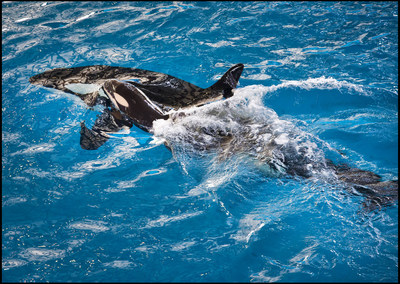
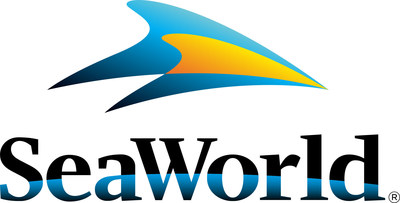
Photo – https://mma.prnewswire.com/media/492166/SeaWorld_Parks_Entertainment_Takara_calf.jpg
Photo – https://mma.prnewswire.com/media/492168/SeaWorld_Parks_Entertainment_newborn.jpg
Logo – https://mma.prnewswire.com/media/217180/seaworld_logo.jpg



